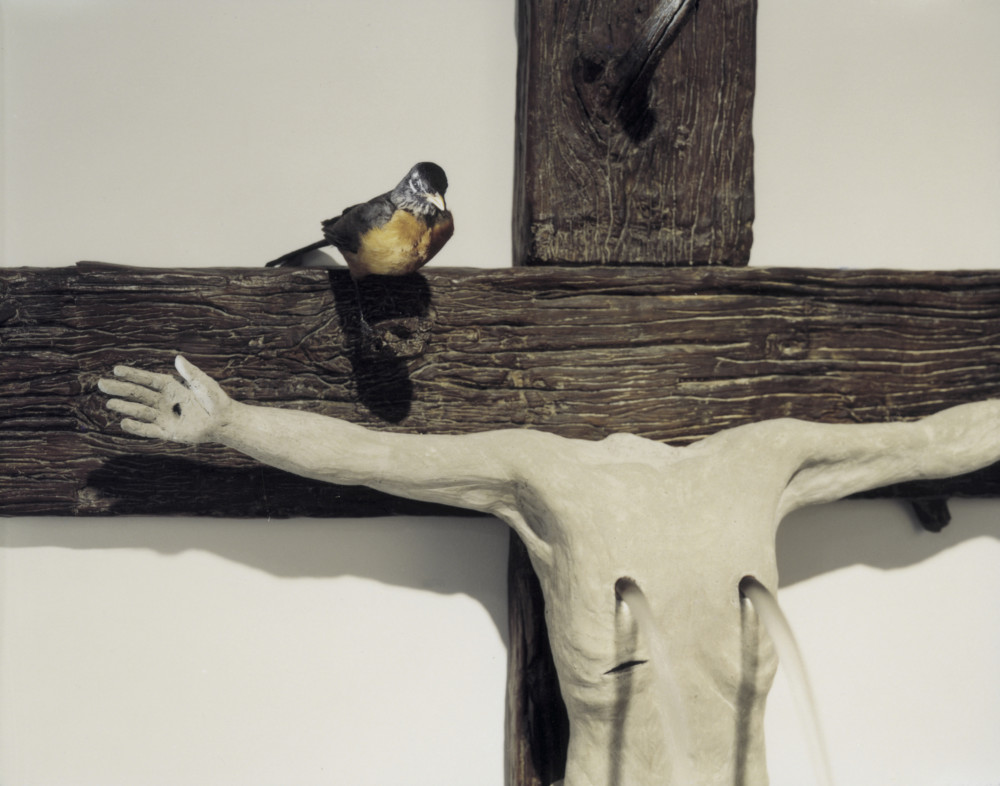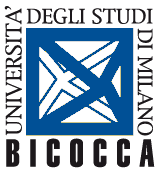Religious freedom and artistic freedom: evolutions and perspectives in the dematerialisation age

Like every manifestation of thought, in fact, art is now an integral part of the 'infosphere' and contributes daily to writing the pages of the 'hyper-history' into which Western societies have passed since most of their resources, as well as essential data, are no longer substantiated in material goods, but in processes and objects that are now devoid of any physical connotation. The works of art themselves, therefore, which had already become abstract and dematerialized, have undergone a further dematerialization, knowing the new modes of dissemination guaranteed by the online.
The link between art and religion, historically almost inseparable, did not erode with secularisation, but the post-secular age has ended up restoring an art scene in which the religious factor and its symbols have returned to play a central role, albeit with new meanings and modes of expression. In Italy, the debate on the relationship between art and religion has become highly topical again in recent years, and witness to this is the publication in Italian, in 2021, of James Elkins' essay entitled "On the Strange Place of Religion in Contemporary Art". Elkins notes how there seems to be no longer any space for traditional religious art, but rather desecrating, almost anti-religious, or a-religious works, in which symbols are used as a reference to the broader experience of the transcendent, or to the dimension of "vehicles of identity" assumed by religions in post-secularism, metaphors for the social cohesion drives of today's lost man (eg. Serrano, Kippenberger, Lachapelle, Hirst).
The cryptic nature of the contemporary artistic message, due as much to the multiplicity of meanings with which symbols are endowed today as to the current modes of expression (performance, visual art, etc.), and the extraordinary diffusivity of the online means of communication that can host them (during the pandemic, which has necessarily had to host them given the suspension of all trade fair and museum activities), poses new questions for the jurist as well, at least because of the unprecedented possibility of intercepting even very distant audiences in terms of sensitivity, who, in a still analogue and non-digital scenario, would never have knowingly decided to expose themselves to the risk of even uncomfortable images, potentially at risk of offending them.
Without intending here to focus in detail on the importance guaranteed to artistic freedom in our legal system, it is sufficient here to recall the apodicticity of the provision dedicated to it by the Constitution in the first paragraph of Article 33, which does not set any express limit. Of course, this does not mean that it is to be considered boundless; on the contrary, its exercise can peacefully be a source of both civil and criminal liability. Particularly on the latter front, the legal system notoriously punishes conduct of “vilification” and damage that can also be integrated by the most diverse artistic manifestations. Think of an installation in which the performer defaces an object of worship, to represent the moral decadence of the community that identifies with that symbol; although lacking the specific intention to offend a religious denomination, such conduct could fall within the scope of those penalised by Article 404, second paragraph, of the criminal code, which only requires the generic intent, albeit intentional, of damaging. Not only that, however: since even religious authorities peacefully constitute a symbol, it is not uncommon for them too to become the subject of artistic representations, with very different modalities and purposes. In this case, the offence of insulting a religious denomination by vilifying persons (Article 403 of the Criminal Code) can be envisaged, which can also be integrated by a manifestation of artistic freedom if it takes the form of an 'indecorous and offensive' representation and is thus 'highly vulgar and apt to vilify religion'. The expressions in which the latter is substantiated may also consist of writings, drawings, gestures, and do not necessarily require the utterance of words.
Now, notoriously, the offences referred to above are of very little application and, for cases of contempt, provide for exclusively pecuniary penalties. Far more serious, then, may become, in the eyes of artists, 'private' sanctions such as the removal from a social network of a post featuring one of their works or, even, the suspension or deletion of their profile. These interventions, in fact, end up, in the digital age, constituting the real censorships of our time, far more than those applicable by public institutions. In an age in which the latter are moving, at least in western legal systems, to progressively dismantle traditional censorship apparatuses, the role of the contemporary Inquisition is peacefully assumed by digital platforms, which have taken over functions that were hitherto typically state functions.
The fact that private companies endow themselves with their own systems of rules in which their values and identity are embodied is certainly not in itself a new fact. On the contrary, contemporary life is characterised by productive realities increasingly conditioned by value components, so much to impose an extension of the traditional category of trendy organisations to all those experiences engaged in the diffusion of a corporate ethos.
The circumstance, however, becomes particularly relevant if it is the main areas in which the personality of individuals is expressed today that have their own rules, non-state and, indeed, 'supra-state', given that these platforms operate globally. In the specific case of manifestations of religious sensibilities, then, we could ask ourselves what space could be granted to them, beyond the artistic aspect, by a social network that adopted a policy of pure neutrality or, on the contrary, that expressed a clear adherence to any ideological or religious orientation.
However, as far as mainstream platforms are concerned, it is the way in which their tendency is constructed that is unprecedented. It is well known that, while particularly rigid are the constraints inherent to the publication of pornographic material, to the point of paradoxical outcomes in cases where profiles of public cultural institutions have been censored for the promotion of works of art depicting nudes, posts with political or religious content are fully permitted.
It is not for lack of choice on the point, however, almost as in a 'neutrality by abstention' as that which necessarily connotes EU policy (due to the principle of conferral); at most, we could speak of 'neutrality by convenience' or 'neutrality by consensus'.
At the risk of cynicism, it should be emphasised that the primary, as well as fully legitimate, reason why platforms decide to equip themselves with an apparatus of rules limiting certain manifestations of thought is primarily economic. On closer inspection, in fact, socials do not express any trend, but have a primary functionality around which they orient all their actions: maximum dissemination. The environment they intend to offer, therefore, is one that reflects the expectations of their users, not a hypothetical Eden. The difficult balance, therefore, to which they aspire is that between the maximum degree of freedom to be granted to customers and a minimum but necessary protection that makes them feel, as far as possible, guaranteed from content they do not want to incur. Too much censorship, in other words, may lead to a loss of market share, but also too much freedom.
In the relationship between private individuals we are discussing - social media and users - it therefore does not seem appropriate to bother with complex concepts such as that of laicità, although the issue of how these are declined today not only for public subjects is increasingly topical. The relationship between platforms and the religious factor is in fact defined by norms that express a tendency of the organisation, but a tendency resulting from the moods, carefully studied by the platforms themselves, of their users who, for example, may not want to risk, while acting in that space, being the object of discrimination, or running into pornographic scenes, or artistic representations in which the symbol of their faith is improperly used.
We are no longer faced, therefore, with the traditional artist-governor dynamic to which history has accustomed us. Now, the boundaries of what is permissible and what is not moving according to the will of the majority, are transposed by the new censors in their policies in order to continue to enjoy their consent and consequent trust. This is the balancing point in the name of which today's spaces for the expression of the individual personality can also limit artistic expression. Only the coming years, or perhaps decades, will be able to provide us with some further indications on the drift of this tendency, but right now it is an issue that cannot fail to interest the law as well, put to the test of unprecedented challenges capable of undermining the very essence of art, which has been nourished since its beginnings by the scandal that upsets the majority.
(Focus by Alessandro Negri)
Relevant case law:
Italian Court of Cassation, Section III, 7 May 2009, n. 10495
Italian Court of Cassation, Section I, 23 March 2017, n. 7468
Italian Criminal Court of Cassation, Section III, 13 October 2015, n. 41044
Essential bibliography:
L. Beatrice, Arte è libertà?, Roma-Cesena, 2020
I. Bargna, Forme del sacro e arte contemporanea fra materiale e immateriale, in Antropologia, vol. 6, n. 1, April 2019
G.G. Carboni, Le forme di tutela della libertà artistica nel diritto comparato, in Diritto pubblico comparato ed europeo, n. 1, 2019
N. Colaianni, Diritto di satira e libertà di religione, in Stato Chiese Plur. Conf., May 2008
G.L. Conti, Manifestazione del pensiero attraverso la rete e trasformazione della libertà di espressione: c’è ancora da ballare per strada?, in Rivista AIC, n. 4, 2018
A. Dall’Asta, Eclissi. Oltre il divorzio tra arte e Chiesa, Cinisello Balsamo, 2016
G. Dalla Torre, Dio o Marianna? Annotazioni minime sulla questione del crocifisso a scuola, in Giustizia civile, 2004, I, 510
L. Floridi, La quarta rivoluzione, Milano, 2017
P. Floris, Libertà di religione e libertà di espressione artistica, in Quad. Dir. Pol. Eccl., n. 1, 2008
K. Klonick, The New Governors: the people, rules, and processes governing online speech, in Harvard Law Review, vol. 131, 2018
A. Licastro, Il “nuovo” volto delle norme penali a tutela del sentimento religioso nella cornice dei così detti “reati di opinione”, in Stato Chiese Plur. Conf., n. 2, 2020
D. Loprieno, Libertà dell’arte vs libertà religiosa. Il caso della censura cinematografica, in Stato Chiese Plur. Conf., January 2009
N. Marchei, La tutela penale del sentimento religioso dopo la novella: il caso “Oliviero Toscani”, in Stato Chiese Plur. Conf., n. 3, 2020
M. Monti, Privatizzazione della censura e Internet platforms: la libertà d’espressione e i nuovi censori dell’agorà digitale, in Riv. It. Inf. Dir., n. 1, 2019
J. Pasquali Cerioli, “Mediatic Globalization” e propaganda religiosa nella società iper-reale, in Quad. Dir. Pol. Eccl., n. 1, 2021
F. Polacchini, ed, La libertà di espressione artistica, Bologna, 2018
F. Rimoli, La libertà dell’arte nell’ordinamento italiano, Padova, 1992
A. Rosen, Art + religion in the 21st century, London, 2017
M. Sammicheli, Disegnare il sacro, Soveria Mannelli, 2018
C. Talon-Hugon, L’arte sotto controllo, Monza, 2020

